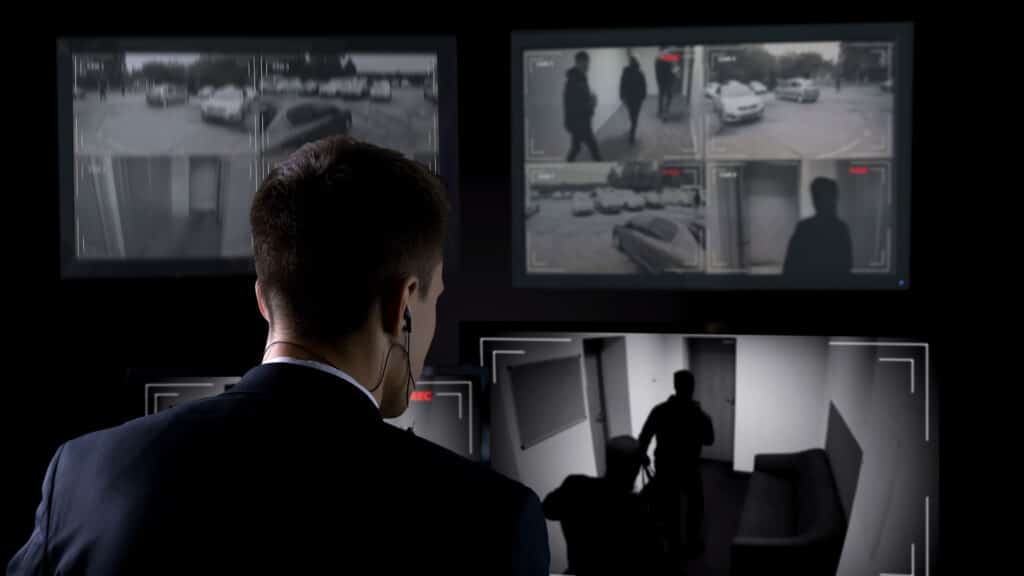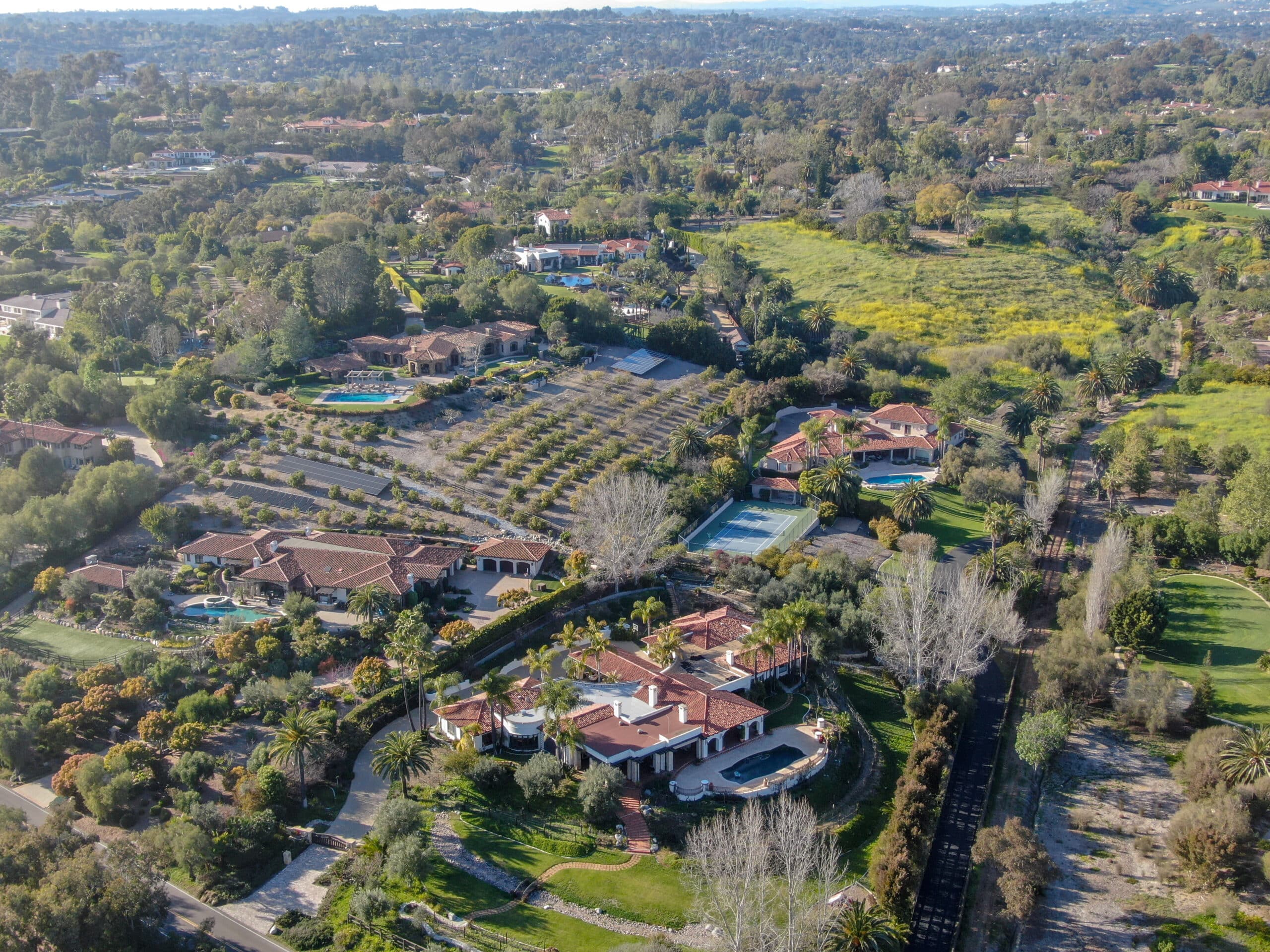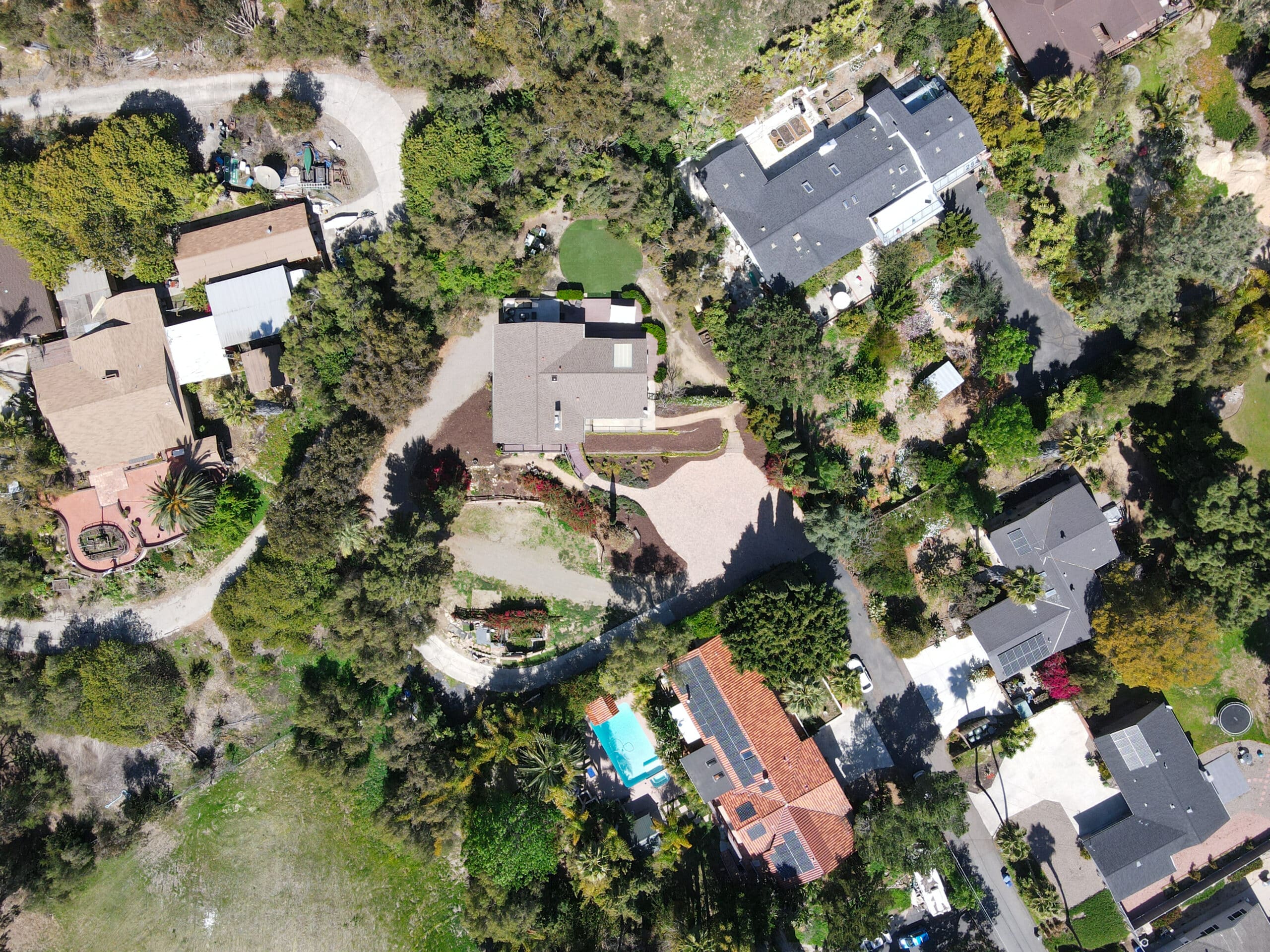Estimated reading time: 16 minutes
In the diverse and dynamic state of California, urban security remains a topic of paramount importance. As we delve into the intricate layers of what makes some of California’s cities among the most dangerous, we must understand the myriad factors contributing to this reality. This article embarks on a comprehensive exploration of urban security challenges, dissecting the roles of technology, socioeconomic factors, community involvement, legislative impacts, and environmental design in shaping the safety landscape of these metropolitan centers. Each city presents unique security challenges and solutions, from the technologically advanced streets of San Francisco to the culturally rich neighborhoods of Los Angeles. Our journey through California’s urban centers aims to provide a detailed and nuanced understanding of the complexities of urban security, offering insights into how these challenges can be effectively addressed to create safer, more resilient communities.
Table of contents
- Introduction to Urban Security Challenges in California
- Analyzing Crime Rates and Patterns in Major Cities
- The Impact of Socio-Economic Factors on Urban Crime
- Technological Advancements in Urban Security
- Community Involvement in Enhancing Urban Security
- Legislative and Policy Frameworks Influencing Urban Security
- The Role of Private Security in Urban Environments
- Impact of Environmental Design on Urban Safety
- Conclusion
Introduction to Urban Security Challenges in California
Overview of California’s Urban Landscape
California’s urban landscape is as diverse as it is dynamic, encompassing some of the largest and most influential cities in the United States. From the tech-centric Silicon Valley, the entertainment hub of Los Angeles, to the policy-driven environment of Sacramento, each city presents unique characteristics and challenges. These urban centers are economic powerhouses and cultural melting pots, attracting people from all over the world. This diversity, while a strength, also introduces complex security challenges. The varying population densities, the mix of residential and commercial areas, and the different economic statuses of these regions contribute to distinct security needs and vulnerabilities. Therefore, urban centers in California must approach security with a tailored strategy that understands and addresses the specific nuances and demands of its environment. This means deploying state-of-the-art security technologies and fostering community engagement and collaboration to ensure a comprehensive security approach.
Historical Context of Urban Crime in California
The history of urban crime in California is a tapestry of evolving challenges and responses. In the late 20th century, California grappled with a surge in gang violence, notably in Los Angeles, which became the epicenter of this crisis. The ’80s and ’90s saw a spike in drug-related crimes, primarily driven by the crack cocaine epidemic, and this period also marked significant changes in law enforcement tactics, including the controversial ‘three strikes’ law, which drastically increased incarceration rates. These historical events have shaped the current security landscape in California. For instance, the legacy of gang violence has influenced current gang prevention and intervention strategies. The crackdown on drugs led to a heightened focus on drug trafficking and its associated crimes. Understanding this historical context is crucial in comprehending California’s current state of urban crime. It provides a lens through which to view current security measures and their effectiveness and insights into the potential future trajectory of urban crime.
Current Challenges in Urban Security
A diverse set of challenges marks the contemporary urban security landscape in California. Gang violence, while reduced from its peak in the late 20th century, remains a significant issue in certain cities. Drug trafficking continues to be a concern, with the emergence of new substances and changing distribution networks. Property crimes, including burglary and theft, are prevalent in many urban areas and often correlate with socioeconomic factors. Additionally, California’s cities face emerging threats like cybercrime, which targets the state’s robust tech industry and digital infrastructure. Socio-economic disparities further compound these challenges. Affluent neighborhoods may have access to advanced private security measures, while lower-income areas often need help with under-resourced public security services. This section has explored the multifaceted nature of urban security challenges in California, emphasizing the need for comprehensive, adaptable, and inclusive security strategies that address the root causes and manifestations of urban crime.
Analyzing Crime Rates and Patterns in Major Cities
Los Angeles – A Case Study
Los Angeles, known for its entertainment industry and sprawling metropolitan area, presents a complex security landscape. The city has historically faced issues like gang violence, property crimes, and, more recently, a rise in digital crimes. The Los Angeles Police Department (LAPD) employs advanced predictive policing techniques, leveraging data analytics to identify potential crime hotspots. Despite these efforts, certain areas in Los Angeles continue to experience higher crime rates, often correlated with socioeconomic factors. The challenge for Los Angeles is to balance proactive policing with community-based strategies, ensuring that security measures do not disproportionately impact specific neighborhoods or communities. This approach necessitates a deep understanding of local dynamics and a commitment to addressing the root causes of crime, such as poverty, lack of education, and unemployment.
San Francisco – Urban Crime Dynamics
With its iconic landmarks and tech-driven economy, San Francisco faces unique security challenges. The city has seen increased property crimes, particularly car break-ins and burglaries. Additionally, issues like homelessness and drug use contribute to the city’s security challenges. San Francisco’s approach to urban crime includes a combination of law enforcement and social services, aiming to address the symptoms and underlying causes of crime. The city’s reliance on crime prevention and monitoring technology, including surveillance cameras and advanced data analytics, is notable. However, this has also raised concerns regarding privacy and the potential for over-surveillance. The situation in San Francisco underscores the importance of adopting a method for urban safety that honors personal freedoms and efficiently tackles criminal activities.
San Diego – Border Proximity and Its Implications
San Diego’s proximity to the Mexico border adds a unique dimension to its urban security landscape. Issues like cross-border drug trafficking and human smuggling are prominent, requiring collaboration between local law enforcement and federal agencies. San Diego has implemented various strategies to combat these challenges, including enhanced border security and intelligence-sharing initiatives. However, these efforts must balance maintaining a healthy cross-border relationship, vital for the city’s economy and cultural exchange. San Diego’s experience underscores the importance of international cooperation and strategic planning in urban security, especially in towns with significant border-related challenges.
The Impact of Socio-Economic Factors on Urban Crime
Poverty and Crime Correlation
The relationship between poverty and crime is a critical aspect of urban security in California. Cities with higher poverty rates often see corresponding increases in certain types of crime, such as theft, burglary, and drug-related offenses. These crimes are frequently driven by economic desperation or the lack of access to legitimate employment opportunities. In urban centers like Oakland and parts of Los Angeles, where poverty rates are higher, there is a noticeable uptick in these crime categories. Therefore, addressing the root causes of poverty becomes an essential strategy for reducing crime rates. This involves law enforcement and a comprehensive approach that includes improving these areas’ education, housing, and employment opportunities. By tackling the socio-economic disparities, cities can create a more secure and equitable environment for their residents.
Education and Its Role in Crime Prevention
Education plays a pivotal role in shaping the security landscape of urban centers. Higher levels of education are generally correlated with lower crime rates. Educational institutions like San Francisco and San Jose are not just centers of learning but also vital in instilling social values and providing opportunities to steer individuals away from criminal activities. Community education programs, vocational training, and mentorship initiatives can profoundly impact vulnerable populations. Many California cities focus on integrating educational programs with community policing efforts, creating a more holistic approach to crime prevention. Such initiatives address immediate security concerns and contribute to long-term development and stability in urban communities.
The Role of Urban Planning in Mitigating Crime
Urban planning is a significant but often overlooked aspect of crime prevention and security in urban environments. The design of public spaces, housing developments, and transportation systems can significantly influence crime rates and patterns. Well-lit streets, open and visible public areas, and efficient transportation can reduce opportunities for crime. Cities like San Diego have implemented urban design strategies to enhance public safety through environmental design. Similarly, revitalizing rundown neighborhoods in Los Angeles has shown that improving physical environments can reduce crime rates. Therefore, Effective urban planning is an essential tool in the arsenal of urban security strategies, contributing not only to a city’s aesthetic and functional improvement but also to its overall safety and security.
Technological Advancements in Urban Security

Surveillance Technology in Crime Detection and Prevention
Surveillance technology has become increasingly prevalent in California’s urban security landscape. Cities like Los Angeles and San Francisco have deployed extensive networks of CCTV cameras, often equipped with advanced features like facial recognition and automatic number plate recognition (ANPR). These systems play a crucial role in both deterring and solving crimes. The real-time monitoring capability allows quicker response to criminal activities, while the recorded footage is invaluable for investigative purposes. However, this widespread surveillance has also raised privacy concerns, prompting a need for regulations that balance security needs with the rights of individuals. The effectiveness of surveillance technology in crime prevention underscores its importance, but it also necessitates a careful consideration of ethical and privacy issues.
Data Analytics and Predictive Policing
Data analytics has revolutionized the approach to urban security in California. Predictive policing, which involves analyzing vast amounts of data to forecast where and when crimes are likely to occur, has been adopted by several cities, including Los Angeles and San Diego. This approach allows law enforcement agencies to allocate resources more effectively, focusing on high-risk areas and potentially preventing crimes before they happen. Predictive policing models use data from various sources, including crime reports, social media, and demographic information. While this proactive approach has shown promising results in reducing crime rates, it also raises concerns about potential biases in the data, which can lead to unfair targeting of specific communities. Ensuring that predictive policing is used responsibly and ethically is a crucial consideration for urban security.
The Role of Artificial Intelligence in Security
Artificial Intelligence (AI) is increasingly significant in enhancing urban security measures. AI technologies, such as machine learning algorithms, are used to analyze patterns in large data sets, helping law enforcement agencies to identify potential criminal activities and respond more effectively. In California, AI is used in various applications, from facial recognition in surveillance systems to analyzing social media for possible threats. This technology can significantly improve the efficiency and effectiveness of urban security strategies. However, as with other advanced technologies, there are challenges and concerns, particularly regarding the accuracy of AI systems and the ethical implications of their use. Ensuring that AI is used transparently and accountable and respects civil liberties is crucial in its application in urban security.
Community Involvement in Enhancing Urban Security
The Role of Community Policing
Community policing is vital in enhancing urban security, particularly in California’s diverse cities. This approach builds strong relationships between law enforcement agencies and their communities. Cities like Oakland and San Francisco have embraced community policing strategies, involving residents in crime prevention efforts and decision-making processes. This collaboration leads to greater trust and cooperation, essential for effective policing. Community policing often includes neighborhood watch programs, public meetings, and partnerships with local organizations. By understanding community-specific needs and concerns, law enforcement agencies can develop more targeted and effective security strategies. This approach helps reduce crime and fosters a sense of shared responsibility for community safety.
Impact of Local Organizations and Initiatives
Local organizations and initiatives play a critical role in urban security in California. These groups often deeply understand their communities and can provide valuable insights into regional security needs. They work on various fronts, from youth mentorship programs to prevent gang involvement to rehabilitation programs for former offenders. In Los Angeles, for example, community organizations have been instrumental in gang prevention and intervention efforts. These groups also serve as a bridge between the community and law enforcement, helping to facilitate communication and collaboration. The success of these local initiatives demonstrates the importance of a bottom-up approach in addressing urban security challenges, complementing the more traditional top-down law enforcement methods.
Public Awareness and Education in Crime Prevention
Public awareness and education are critical components in the fight against urban crime. Informed citizens are better equipped to protect themselves and their communities. Many cities in California have implemented public awareness campaigns on various security issues, from burglary prevention to cyber security. These campaigns often involve seminars, workshops, and distribution of educational materials. Additionally, schools and community centers are crucial in educating young people about the risks and consequences of criminal behavior. By increasing public awareness and providing education on security matters, urban communities become more resilient and less vulnerable to crime. This collective awareness is a powerful tool in building safer urban environments.
Legislative and Policy Frameworks Influencing Urban Security
State and Local Legislation Impacting Crime Rates
Legislation at both the state and local levels plays a crucial role in shaping the urban security landscape in California. Laws and ordinances related to crime and public safety directly influence crime rates and the effectiveness of law enforcement. For instance, California’s “three strikes” law, though controversial, had a significant impact on crime rates and the prison population. Additionally, local ordinances in cities like San Francisco and Los Angeles, such as those regulating public spaces or setting curfews, also affect urban crime dynamics. The challenge lies in creating laws that effectively reduce crime while being fair and respectful of civil liberties. This requires a nuanced understanding of the complex interplay between legislation, law enforcement practices, and community needs.
The Role of Policy in Shaping Law Enforcement Strategies
Policies at various government levels shape the strategies and practices of law enforcement agencies in California’s urban centers. These policies determine how resources are allocated, what training programs are implemented, and how crimes are prioritized. For example, policies focusing on community policing or restorative justice have led to different crime prevention and response approaches. Policies promoting the use of technology in law enforcement, such as body cameras or data analytics, also significantly impact how police work is conducted. Effective policy-making requires a balance between ensuring public safety, protecting individual rights, and addressing the root causes of crime.
Reform Initiatives and Their Impact on Urban Security
Reform initiatives, often driven by public demand, profoundly impact urban security. In recent years, there has been a push for criminal justice reform in California, reflecting a growing awareness of issues like mass incarceration and racial disparities in policing. These reforms include reducing sentences for non-violent crimes, improving conditions in detention facilities, and enhancing transparency and accountability in law enforcement. Cities like Los Angeles and Oakland have been at the forefront of these reform efforts, experimenting with alternative approaches to traditional policing and sentencing. While the impact of these reforms is still being evaluated, they represent a significant shift in how urban security is approached, emphasizing a more humane and equitable system.
The Role of Private Security in Urban Environments
Integration of Private Security with Public Safety Efforts
In California’s urban landscapes, private security plays a significant role in complementing public safety efforts. Businesses, residential communities, and even some public spaces increasingly rely on private security firms to ensure safety. This integration presents both opportunities and challenges. On the one hand, private security can add valuable resources and specialized skills to urban security efforts. For instance, private security works with local law enforcement in Downtown Los Angeles and the Financial District of San Francisco to patrol and monitor high-traffic areas. However, this collaboration requires careful coordination to ensure private security operations align with public safety goals and legal standards. Effective communication and cooperation between private security firms and law enforcement agencies are essential for a cohesive security strategy.
Standards and Regulations Governing Private Security
The effectiveness and reliability of private security in urban environments largely depend on the standards and regulations governing this sector. California’s private security firms and personnel are subject to state licensing and training requirements. These regulations are designed to ensure a high level of professionalism and accountability. Cities like San Diego and San Jose have seen a surge in private security services, prompting a closer examination of these regulatory frameworks. Ensuring that private security providers adhere to strict standards is crucial for maintaining public trust and providing services effectively to enhance urban security. These regulations must be evaluated and improved continuously to keep pace with the evolving security landscape and technological advancements.
Ethical and Privacy Considerations in Private Security Operations
The growing presence of private security in urban centers raises essential ethical and privacy considerations. Unlike public law enforcement agencies, private security firms are sometimes subject to different levels of scrutiny and public accountability. This can lead to concerns about privacy infringement, especially with the use of surveillance technologies. In cities like Los Angeles, where private security cameras are widespread, the balance between security and privacy becomes contentious. Establishing clear guidelines and ethical standards for private security operations, particularly regarding surveillance and data handling, is imperative. Ensuring transparency in their operations and focusing on protecting individual rights are crucial to gaining public trust and effectively contributing to urban security.
Impact of Environmental Design on Urban Safety

Principles of Crime Prevention Through Environmental Design (CPTED)
Crime Prevention Through Environmental Design (CPTED) is a critical aspect of urban planning that significantly impacts safety in California’s cities. CPTED principles focus on designing urban environments that naturally deter criminal activity. This includes ensuring natural surveillance through strategically placing windows and lighting, controlling access to spaces to prevent unauthorized entry, and fostering a sense of territoriality where residents feel a sense of ownership and responsibility for their community spaces. Cities like San Diego and Irvine have successfully implemented CPTED principles in various neighborhoods, resulting in noticeable reductions in crime rates. Incorporating these design elements in urban planning enhances physical security and promotes a safer, more inviting atmosphere for residents and visitors.
The Role of Green Spaces in Urban Safety
Green spaces, such as parks and community gardens, significantly promote safety in urban environments. These spaces can contribute to reduced crime rates by increasing visibility and fostering community engagement. Well-maintained and actively used green spaces are less likely to be sites of criminal activity. In California, cities like San Francisco and Sacramento have focused on revitalizing and maintaining their green spaces as part of their urban safety strategies. These efforts improve the aesthetic appeal of the cities and provide communal areas that encourage social interaction and community cohesion, which are vital components of a safe urban environment.
Impact of Infrastructure and Transportation on Urban Crime
The design and layout of urban infrastructure and transportation systems can significantly influence city crime rates and patterns. Efficient and safe public transportation, well-connected streets, and pedestrian-friendly pathways can reduce opportunities for crime. In contrast, poorly designed areas with limited visibility and access can become hotspots for criminal activities. California’s urban planners increasingly recognize the importance of these factors in crime prevention. For instance, efforts to improve public transportation in Los Angeles, including better lighting and security at transit stations, have enhanced commuter safety. Similarly, developing bike paths and pedestrian walkways in cities like San Jose promotes healthier lifestyles and contributes to a safer urban environment.
Conclusion
In conclusion, the quest to identify and mitigate risks in California’s most dangerous urban centers is multifaceted, demanding a comprehensive approach encompassing advanced technologies, community involvement, legislative frameworks, private security integration, and innovative urban design. Each aspect plays a pivotal role in shaping the overall security landscape of these metropolitan areas.
Technological surveillance and data analytics advancements have revolutionized urban security, offering unprecedented crime detection and prevention capabilities. However, these advancements are responsible for balancing efficiency with ethical considerations and privacy concerns. Community involvement, through initiatives like community policing and local organizations, has proven indispensable in building trust and cooperation, which is essential for effective and sustainable security strategies.
Legislative and policy frameworks form the backbone of urban security, guiding law enforcement practices and shaping the overall approach to public safety. These frameworks must continuously evolve to address emerging challenges and to ensure a just and equitable application of the law. Integrating private security services complements public safety efforts, adding valuable resources and expertise, but also necessitates strict regulatory oversight to maintain high standards and ethical practices.
Through principles like CPTED, the environmental design demonstrates that the physical layout and infrastructure of urban spaces can significantly influence crime rates and perceptions of safety. Well-designed green spaces, transportation systems, and public areas enhance a city’s aesthetic appeal and play a crucial role in crime prevention.
Ultimately, the security of California’s urban centers is a dynamic and ongoing challenge, requiring collaboration, innovation, and a commitment to addressing both the symptoms and root causes of crime. California can continue improving its urban centers’ safety and quality of life by harnessing the strengths of technology, community, legislation, private sector participation, and urban planning.












